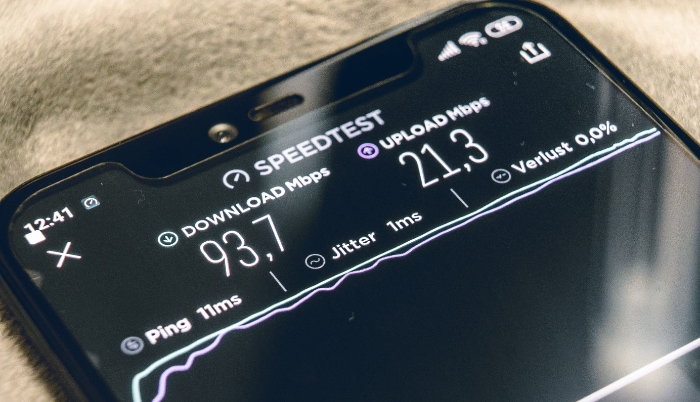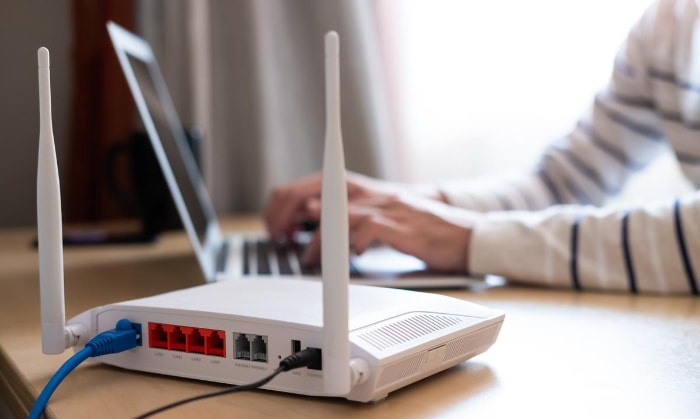Why Is My Upload Speed So Slow? The Inside Scoop

Fast internet is a staple of our digital age, yet many of us experience the frustration of slow upload speeds. This common annoyance not only hampers our ability to share content quickly but also affects our overall online experience.
From struggling to upload an important work file to facing delays in posting your latest vlog, slow upload speeds can be a significant hindrance in our increasingly online world.
But what really causes this sluggishness? Is it the technology at home, the service provider, or something else?
Technical Factors Affecting Upload Speed
Slow upload speeds can be a significant issue for many internet users. In this section, we explore the technical factors that may be impacting your ability to send data swiftly over the internet.
Internet Service Provider Limitations
Your Internet Service Provider (ISP) plays a crucial role in your internet experience. The speed package you choose often determines your maximum upload speed.
Some ISPs prioritize download speeds, offering much lower upload speeds in comparison. Furthermore, the technology used by your ISP, whether it’s fiber-optic, DSL, cable, or satellite, also significantly impacts your upload speed.
Type of Internet Connection
The kind of internet connection you have is a major factor in upload speed. Fiber-optic connections typically offer the fastest speeds for both uploads and downloads.
Cable internet, while widely available, usually has slower upload speeds. DSL connections may provide consistent speeds but often lag behind in terms of peak performance.
Satellite internet can be a viable option in remote areas but generally has the lowest upload speeds due to the significant distance data must travel.
Network Congestion and Peak Usage Times
Internet speed isn’t just about your connection; it’s also about how crowded the network is. During peak hours, when more people are online, ISPs can experience network congestion.
This overcrowding on the network can lead to slower upload speeds as multiple users share the same bandwidth. Think of it as traffic congestion on a highway; the more cars there are, the slower everyone moves.
Throttling and Data Caps
Some ISPs enforce data caps or throttle internet speeds once a certain amount of data is used. Throttling is when your ISP intentionally slows down your internet speed.
This can often happen if you engage in high-bandwidth activities like streaming in 4K or large-scale file uploading. Knowing the terms of your internet plan can help you understand if throttling or data caps are affecting your upload speeds.
Hardware and Infrastructure
The physical components of your internet setup, like the modem, router, and cables, play a pivotal role in determining your upload speed. Let’s dive into how these hardware elements and the overall infrastructure can affect your internet performance.
Modem and Router Capabilities
Your modem and router are the gatekeepers of your internet speed. Older models may not support the faster speeds offered by modern internet plans.
Upgrading to a newer router or modem can significantly improve your upload speeds, especially if your current equipment is several years old. Also, consider whether your router supports the latest Wi-Fi standards, which offer improved speed and range.
Age and Condition of Devices
The performance of the devices you use, like smartphones, laptops, and desktops, also influences your upload speed. Older devices may have outdated network cards that cannot handle higher speeds.
Regularly updating your devices or investing in newer technology can ensure you’re not missing out on faster upload speeds due to outdated hardware.
Quality of Internal Wiring and Connections
The wiring inside your home, including Ethernet cables, can degrade over time. Poor quality or damaged cables can lead to significant speed losses.
Upgrading to high-quality, well-shielded cables can help maximize your network’s performance. Additionally, the way your home network is set up, including the length of cables and the number of splits, can also impact speed.
Wi-Fi vs. Ethernet Connections
While Wi-Fi offers convenience, it often comes at the cost of speed, especially for uploads. Physical obstacles like walls and distance from the router can weaken the Wi-Fi signal.
An Ethernet connection, though less flexible, provides a more stable and faster internet connection. For tasks requiring high upload speeds, consider using an Ethernet cable for a direct connection to your router.
Software and User-Related Issues

Apart from the physical aspects, software settings and user behavior significantly influence upload speeds. Understanding these factors can empower users to optimize their systems for better performance.
Background Applications and Bandwidth Impact
Running multiple applications can consume a significant portion of your bandwidth, leaving less available for uploading. Background processes like automatic updates, cloud syncs, or streaming services can particularly hog bandwidth.
Monitoring and managing these applications can free up more bandwidth for your uploads.
Operating System Settings and Optimizations
Your operating system’s settings can impact internet speed. Features like automatic updates or system-assisted cloud backups can slow down upload speeds when active.
Tweaking these settings for optimal performance can help maximize your upload speeds.
Viruses and Malware
Malicious software like viruses and malware can significantly slow down your internet speed. These unwanted programs can run background processes that consume bandwidth or even hijack your internet connection.
Regular scanning and removal of such threats are crucial for maintaining optimal upload speeds.
Browser and App Configurations
The browsers and apps you use can also affect upload speeds. Outdated browsers or apps, improper configurations, or add-ons and extensions can slow down uploads.
Keeping your browsers and apps updated and minimizing unnecessary extensions can improve performance. Additionally, using apps optimized for uploading can also boost speed.
Environmental and External Influences
Beyond technical and software-related factors, environmental and external influences can also affect your internet upload speeds. Understanding these external factors can help you better manage your internet performance.
Physical Obstructions and Signal Interference
Wi-Fi signals can be significantly weakened by physical barriers like walls, floors, and large objects in your home or office. Additionally, other electronic devices can cause interference.
For instance, microwaves and cordless phones operate on frequencies that can disrupt Wi-Fi signals. Reducing obstructions and interference can enhance your Wi-Fi signal strength and, consequently, upload speeds.
Geographic Location and Distance from ISP Servers
Your distance from the nearest Internet Service Provider (ISP) hub can impact your upload speed. The further you are from these servers, the greater the signal degradation.
This is particularly noticeable in rural or remote areas. While it’s not always feasible to change your location, understanding this factor can help in managing expectations regarding internet speed.
Weather Conditions and Their Impact on Certain Connection Types
Weather conditions can affect certain types of internet connections. For example, satellite internet is susceptible to interference from heavy rain, snow, or extreme weather conditions.
Even traditional broadband connections can be impacted by severe weather, as it can damage external cables and infrastructure.
Network Sharing and Multiple User Impact
The more people using the same network, the slower the upload speed can be. This is because the available bandwidth is shared among all users.
In a household or office where multiple devices are connected to the same network, each device’s upload speed can be significantly reduced during peak usage times. Managing network access and setting priority for devices needing higher speeds can help alleviate this issue.
Conclusion
Slow upload speeds can be a source of considerable inconvenience in our fast-paced digital world. This comprehensive look at the various factors influencing upload speeds highlights that the issue is often a complex interplay of technical, hardware, software, environmental, and user-related factors.
From the limitations set by your ISP to the physical setup of your hardware, many elements come into play. Remember, simple steps like conducting proper speed tests, optimizing router settings, and upgrading outdated hardware can make a significant difference.
Additionally, being aware of software and environmental influences helps in making informed decisions to enhance your internet experience. By understanding these diverse aspects, you can better troubleshoot and improve your upload speeds, ensuring a smoother and more efficient online presence.



